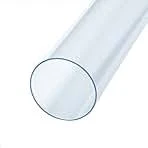Dec . 03, 2024 22:43 Back to list
Understanding the Benefits and Applications of PVC Pipe in Construction and Plumbing
The Versatility and Benefits of PVC Pipes
Polyvinyl chloride (PVC) pipes have become increasingly popular in various applications due to their remarkable versatility, durability, and cost-effectiveness. They are widely used in construction, plumbing, drainage systems, electrical conduits, and even in the agricultural sector. This article will delve into the characteristics that make PVC pipes a preferred choice and explore their many advantages.
Composition and Properties
PVC is a synthetic plastic polymer made from the polymerization of vinyl chloride monomer. Its composition results in a rigid yet lightweight material, making it ideal for piping solutions. PVC pipes are available in different diameters and wall thicknesses, allowing for a broad range of applications. One of the most notable properties of PVC is its resistance to corrosion and chemical degradation. Unlike metal pipes, which can rust or corrode over time, PVC pipes remain intact even when exposed to harsh chemicals and environmental conditions.
Advantages of PVC Pipes
1. Cost-Effectiveness One of the primary reasons for the popularity of PVC pipes is their affordability. They are generally less expensive than other types of piping materials, such as copper or galvanized steel. Additionally, their lightweight nature reduces transportation costs and makes installation more manageable.
2. Durability PVC pipes are known for their longevity. Under normal conditions, they can last for over 50 years without significant deterioration. This longevity translates into less frequent replacements and lower maintenance costs, making them an economical choice in the long run.
3. Versatility The range of diameters and thicknesses available means PVC pipes can be used in various systems—from residential plumbing to complex industrial applications. They can also be easily joined with other materials, making them suitable for mixed-material systems.
pvc pipe

4. Ease of Installation Installation of PVC piping is straightforward due to its lightweight nature and the availability of various joining methods, such as solvent welding and mechanical fittings. This ease of use allows for quicker installation times and reduced labor costs.
5. Resistance to Biological Growth PVC does not support the growth of bacteria, algae, or fungi, which is crucial in applications such as potable water systems. This feature helps maintain water quality and reduces the risk of contamination.
6. Environmental Considerations Although the production of PVC has environmental implications, it is worth noting that PVC pipes can be recycled. Many manufacturers have introduced recycling programs, allowing old PVC pipes to be repurposed into new products, thus reducing landfill waste.
Applications of PVC Pipes
The applications of PVC pipes are extensive. In the construction industry, they are used for waste drain, vent, and sewer lines. Their resistance to corrosion makes them suitable for transporting chemicals in industrial settings. In the agricultural sector, PVC pipes are commonly used for irrigation systems and water supply due to their ability to withstand soil conditions and pressure.
Moreover, PVC pipes are essential in electrical installations, serving as conduits for electrical wiring to protect against physical damage and moisture. Their lightweight nature simplifies the tasks of both shipping and installation, ultimately leading to increased efficiency on job sites.
Conclusion
In conclusion, PVC pipes have established themselves as a reliable and versatile solution for various piping needs across industries. Their inherent properties, including cost-effectiveness, durability, ease of installation, and resistance to corrosion, make them a superior choice compared to other materials. As technology advances and sustainability becomes increasingly important, PVC pipes will continue to play a vital role in the infrastructure of modern society. With their myriad applications and benefits, PVC pipes are undoubtedly an integral part of our everyday lives and future developments in construction and utility systems.
-
High-Quality PPR Pipes and Fittings Durable ERA PPR & PVC PPR Solutions
NewsJul.08,2025
-
Black HDPE Cutting Board - Durable, Non-Porous & Food Safe HDPE Plastic Cutting Board
NewsJul.08,2025
-
High-Quality CPVC Panel Durable HDPE & PVC Panels Supplier
NewsJul.08,2025
-
Double PE Welding Rod Supplier - High Strength, Durable & Versatile Welding Solutions
NewsJul.07,2025
-
High-Quality PVC-O Pipe Supplier Durable 75mm PVC Pipe & Connections Leading PVC Pipe Company
NewsJul.07,2025
-
HDPE Drainage Pipe Supplier – Durable & Corrosion-Resistant Solutions
NewsJul.06,2025

